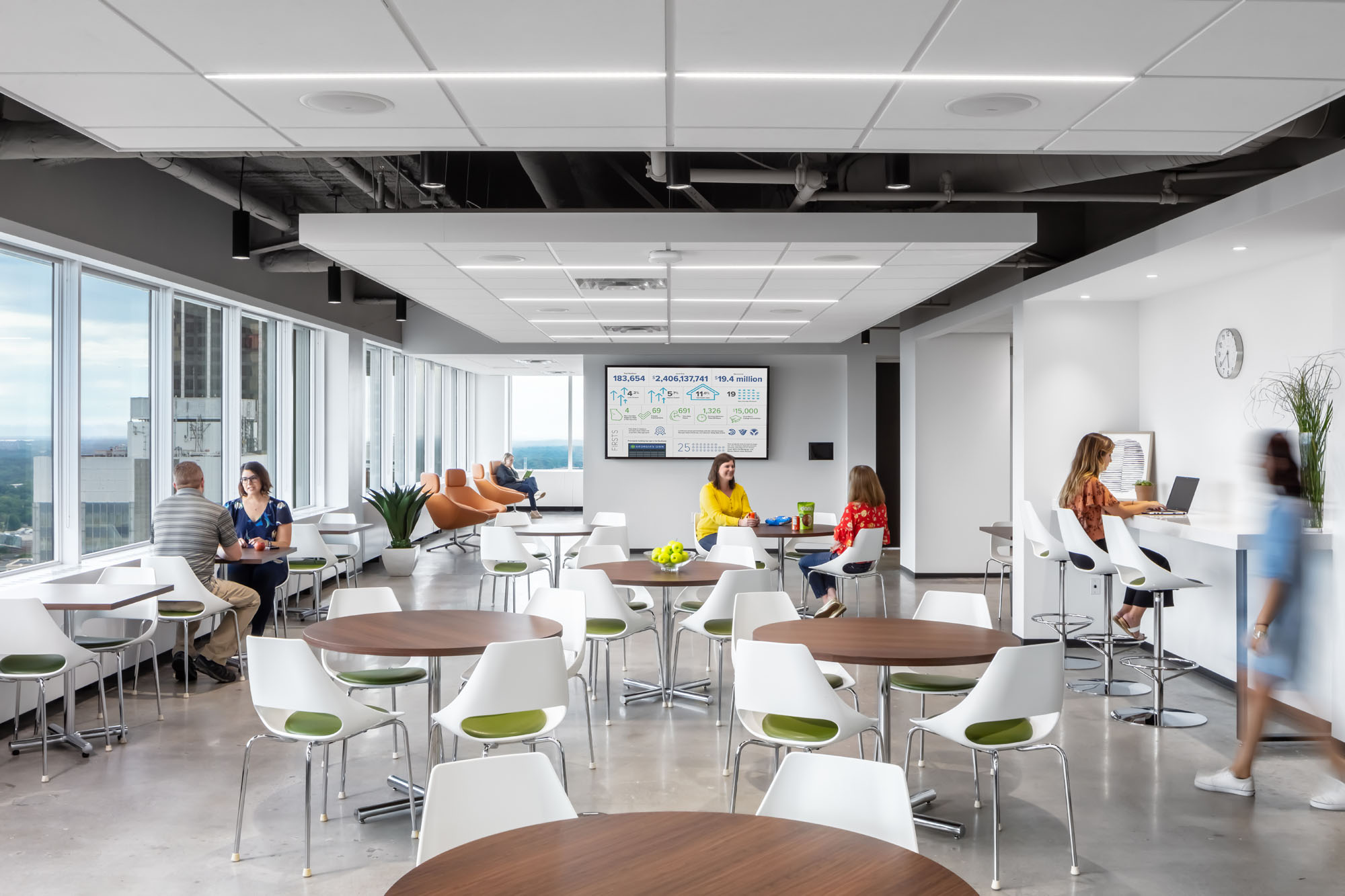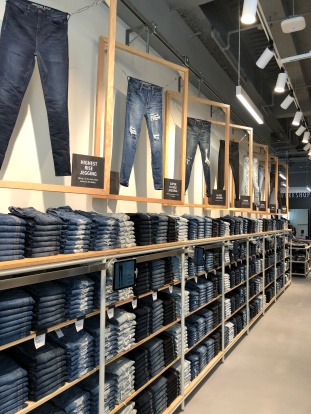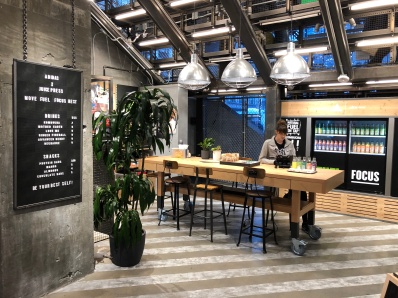Work After COVID-19: Regaining Control
Like many right now, I am following my city’s orders to stay at home, and I’ve miraculously found no shortage of mini-projects to keep busy. Repaint the bathroom? Check. New plants and rugs in the living room? On it. Reorganize the linen closet? Done… twice.
Maybe this is the natural impulse of a designer stuck in one place, or just a reach for easy distractions. But when I think about the strange circumstances we are all facing, I realize there’s a greater issue at play: control.
When we feel powerless against something greater than us, a little control over one’s immediate environment can bring peace of mind. Even if it’s just adding a new succulent to the kitchen windowsill.
As a workplace designer – and an office worker myself – I wonder what employees will expect and demand of their workspace once this crisis subsides. It’s no longer a question of whether, but how, offices must evolve as a result. Open planning is under scrutiny, and infection control is a newly urgent issue no longer limited to healthcare facilities. And as we’ve seen in the past, major crises can create new norms out of old.
Designers can start asking some important questions now. What can our profession do to give workers a greater sense of control in their workspace after we emerge from this turbulent time?
The last ten years have made a promising start. A more mobile workforce and greater flexibility in work schedules has changed office design from the inside out. We should continue to explore how we can push and develop current strategies to support the concept of personal agency – and by extension, peace of mind – at work.

Some of these include:
WELL Strategies and Comfort
Broader adoption of WELL design strategies is making the office a greener, healthier place to be all day. With its focus on individual thermal and lighting controls as well as overall air quality, WELL criteria can also give workers a greater sense of comfort and confidence within their personal space.
Activity-Based Work Settings
Floor plans with unassigned seating and/or a variety of space choices offer employees the flexibility to move around as needs change throughout the day. They are also naturally supportive of employees who split their work time between the office and home, which we may see in greater numbers post-COVID crisis.
Hygiene Control
Especially in free address environments where desks are shared, hygiene will receive sharper focus. Hygiene has always factored into office design, but we can start thinking now about how to expand, improve, and include all employees in cleaning strategies, such as setting up a frequency protocol for cleaning shared spaces with high turnover throughout the day.
Focus on Mental Health
Well-being has become equally as important as physical wellness in office design. In a post-crisis era, designers can explore further measures that will support positive mental states and a feeling of control, from increasing the amount of simple micro-changes employees can make within their space, to including yoga/meditation rooms and other relaxing amenities.
We know infection control in the workplace will be getting more attention in the coming months. But let’s also remember how important a sense of personal agency is to feeling healthy, safe, and content at work. Pursuing design that speaks to both physical and mental health will help us overcome the present challenges we face and be better prepared for the next emergency in the future.
“Experience” NYC Retail
I had the (rare) fortune last week of having a few moments to check out some of the latest retail concepts in New York. And knowing in the back of my mind that “experience” might be the most overused word in retail in 2017, I went in expecting to “experience something” and let’s just say NYC retail didn’t let me down. Whether it be interactive, personalized or just over the top grandeur in flagship scale, there was plenty to check out and really dive deep into some of the brand stories. Some of my favorites included:
The new Google experience was pure delight — letting all of us feel like “we were kids again”. Playing with “big kid toys” via the VR goggles, the AR merchandising presentations, and even the Stranger Things Photo Experience and “Photo Booth” brought pure play into the shopping experience (and all executed fairly simply). The associates did a phenomenal job continuously highlighting the features and benefits of the products that were delivering the “experiences”. Thanks Google for offering a moment of respite on a cold fall day — for a second we forgot we were shopping!
American Eagle
Unbeknownst to us we arrived on opening day! Two things made this an exceptional experience: 1. The associates. They could not have been more proud of the store and were happy to show it off and 2. The open platform for the store mixing retail, customization and dwell time into a cohesive space that felt part retail, part atelier, part studio space and part hip hangout. We were impressed with AE‘s customization offering; it initially appeared like minor accessories could be added to your denim wear, but apparently their associates have already pulled off some pretty impressive, custom denim looks for customers. As well we were drawn to the real estate dedicated to supporting customers – offering free laundry for local college students as well as a cooperative work space and lounge.

Adidas 5th Avenue Flagship
I always love it when brands go big and go bold. The Adidas Flagship on 5th Avenue does just that, creating a customer journey that intertwines a voluminous environment with a mix of personal spaces, customized experiences, retail vignettes and educational platforms. While the product is truly hero presented via dynamic visual merchandising stories, it’s the unexpected moments at every turn that really bring this brand experience to life. Whether it be the testing area for product trial, the print shop for personalization, the customized shoe shop offering curated opportunities or the juice bar (yes, even refreshments have been incorporated to align with the brand) there are experiences for every athlete.
Perfect for the holidays, YSL created a simple, yet well-choreographed experience for its SoHo pop-up. Highlighting both fragrance and cosmetics, the store brought trial to the forefront. Having their national style artist there was the perfect start for one-on-one consultations, but the brand married that with a “virtual trial” system that was flawless in updating selections in the moment. And to top it off you could fully customize your product case via in-store engraving in only a matter of seconds with the design of your choice.

The Great Restaurant Reset: The Future of Engaging Food Experiences
Many factors will shape the future of restaurants and the way we dine, but at a minimum, the industry will be led by new behaviors that were shaped by what we learned about dining when it was gone.
While traditional dining is here to stay, brands will need to explore new avenues of engagement both inside and outside restaurants. Learn more about the future of engaging food experiences in our latest report.
Cobb County Adult Detention Center
Hardman Farm State Historic Site
Davidson County Criminal Justice Center
Xavier University
Home Page
Camperdown
Healthcare after COVID-19: Smart design solutions for clinical spaces
This pandemic is unlike anything we’ve seen before and has forced architects and designers to take a more critical eye to our projects in every industry, especially healthcare. The sad realization is, history repeats itself, but this is our chance to evaluate and make changes today that will have a significant impact in the future.
So how can we help?
According to U.S. Army researchers, harsh cleaners must be used every two hours to keep hospital surfaces free of bacteria such as MRSA and VRE. For many facilities, this frequency of environmental services is just improbable. Therefore, the critical decisions that go into interior solutions for hospitals must offer opportunities to minimize the effects of contagions. When selecting materials and fixtures, healthcare interior designers have the responsibility to uphold the most stringent infection control standards.
Here are a few smart and healthy interior design solutions for clinical spaces:
- Paint Shield/Registered Anti-Microbial Paint kills 99.9 percent of Staph, MRSA, E. coli, VRE, and Enterobacter aerogenes within two hours of exposure on painted surfaces and continues fighting for up to four years post application.
- Copper fixtures and copper-infused mesh or upholstery on furniture mitigates bacterial and viral transmissions, while copper-filled composite hard surfaces and linens have proven to reduce the number of hospital acquired infections.
- Silver Ion Technology is integrated into many coatings, polymers, and textiles at the molecular level of the product and not susceptible to wash-offs. This antimicrobial technology can be specified for common hospital fixtures including light switches, door handles, water tanks, bed rails, storage containers, bedding, gowns, cubicle curtains and carpet.
- Lighting Fixtures with Disinfection Technology should be used in high-acuity spaces. Fixture current’s disinfection capabilities are safe for human use and kill up to 99.7 percent of common surface pathogens over an eight-hour period.
- The Three I’s: Integral, Impervious, Impermeable. Seal nooks and crannies to eliminate hard-to-reach contaminants in patient areas and specify integral sinks and wall bases. Mitigate the opportunities for surface-borne pathogens with impervious hard counter surfaces. And improve cleanability with impermeable upholstery on patient and family seating.
As we enter the post-COVID-19 world, it is clear that we must harmonize design with infection control standards. These are a few easy-to-implement strategies that can be used in a wide array of solutions without ever compromising patient safety or design.

